“Better than a thousand days of diligent study is one day with a great teacher.”
– Japanese Proverb
We wish to thank these Advisors who have so generously offered their knowledge to this project.
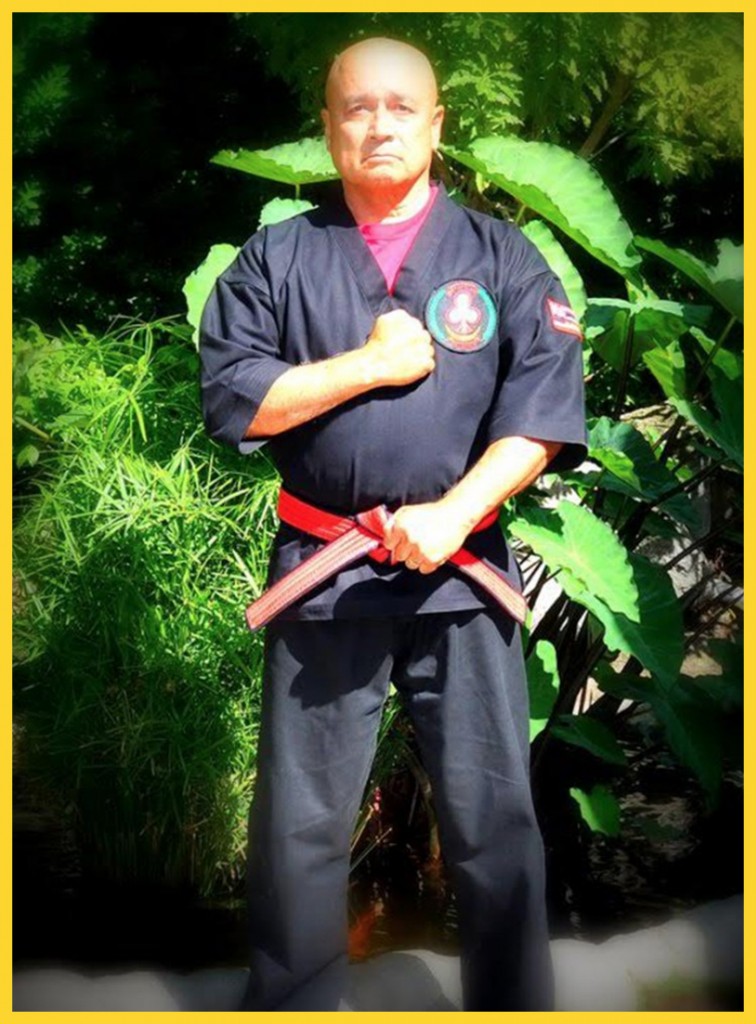
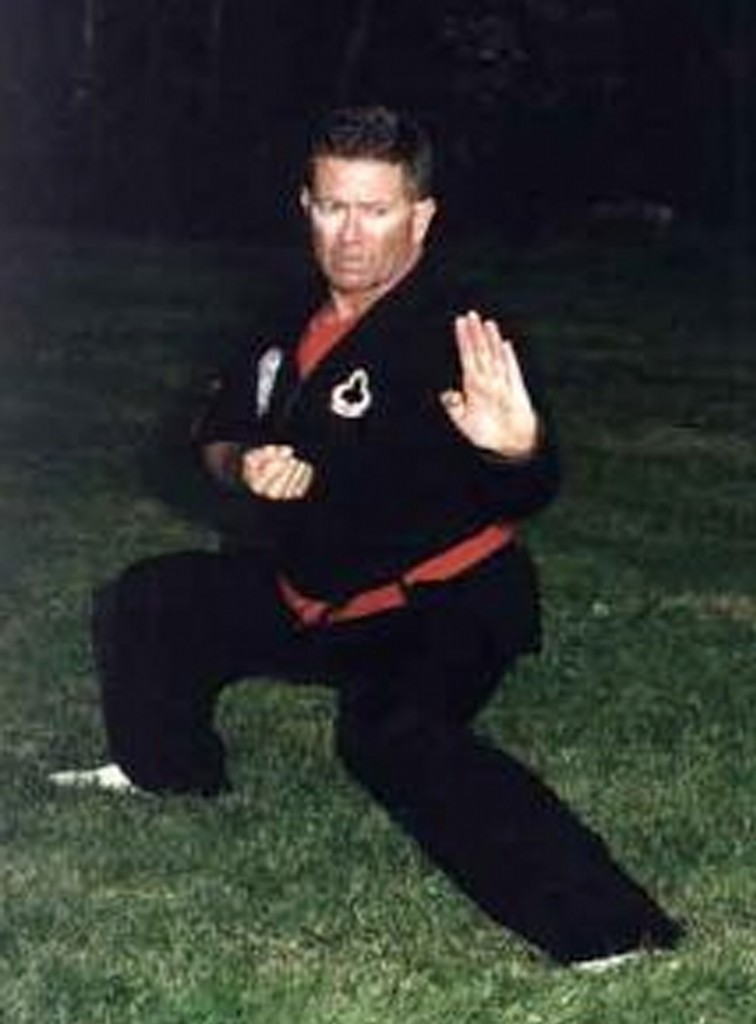
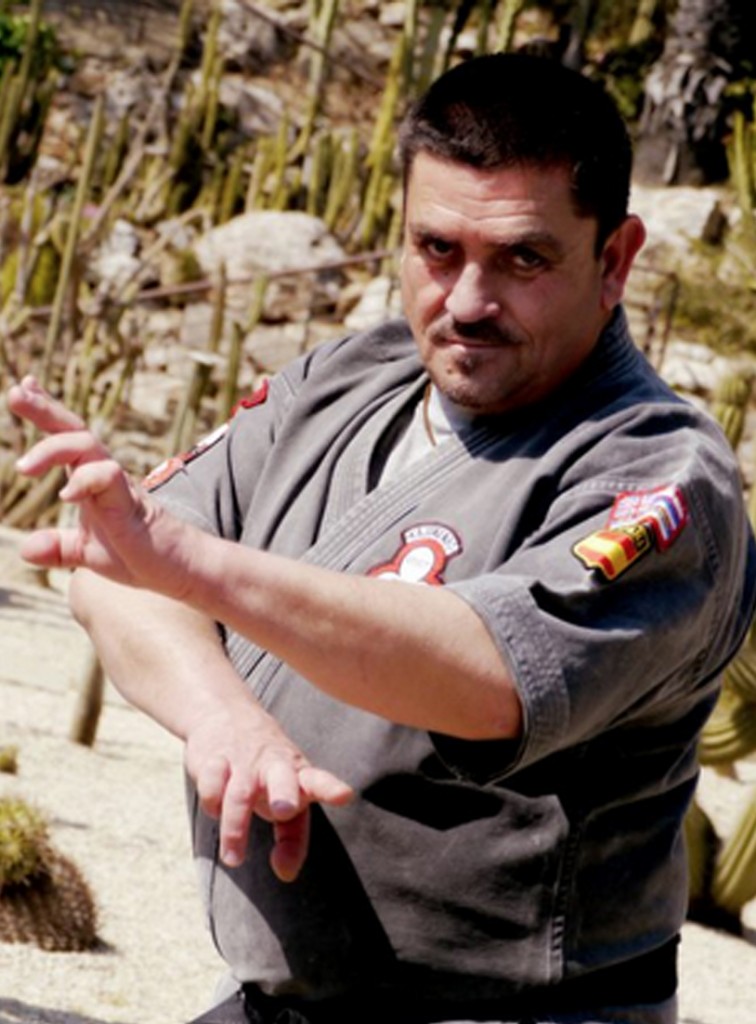
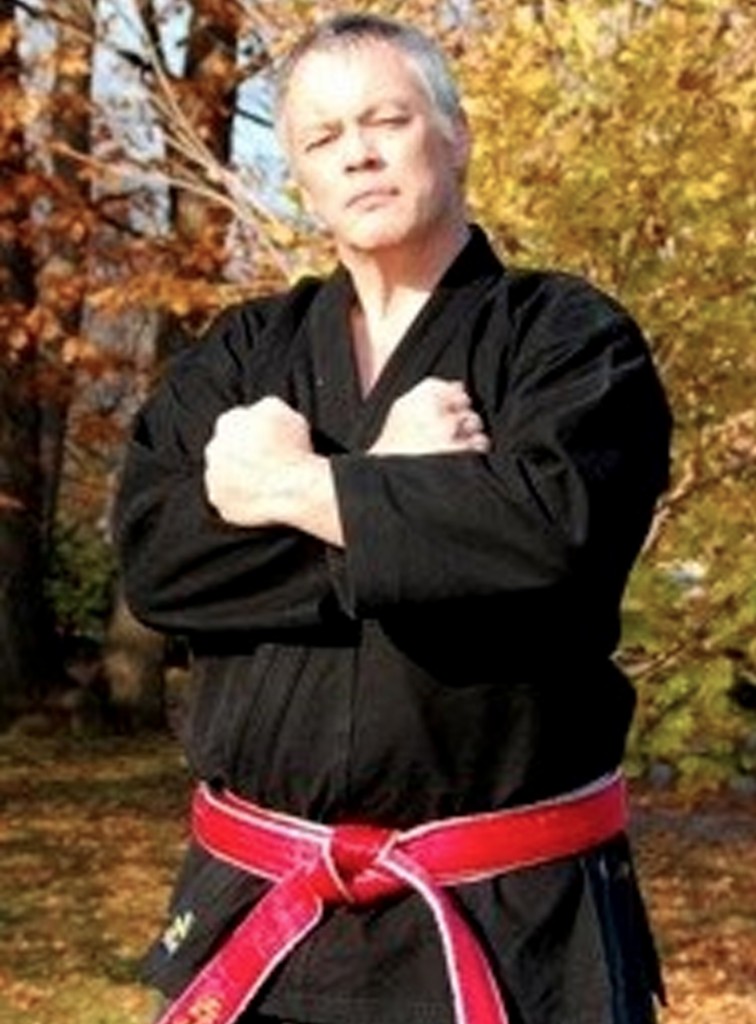
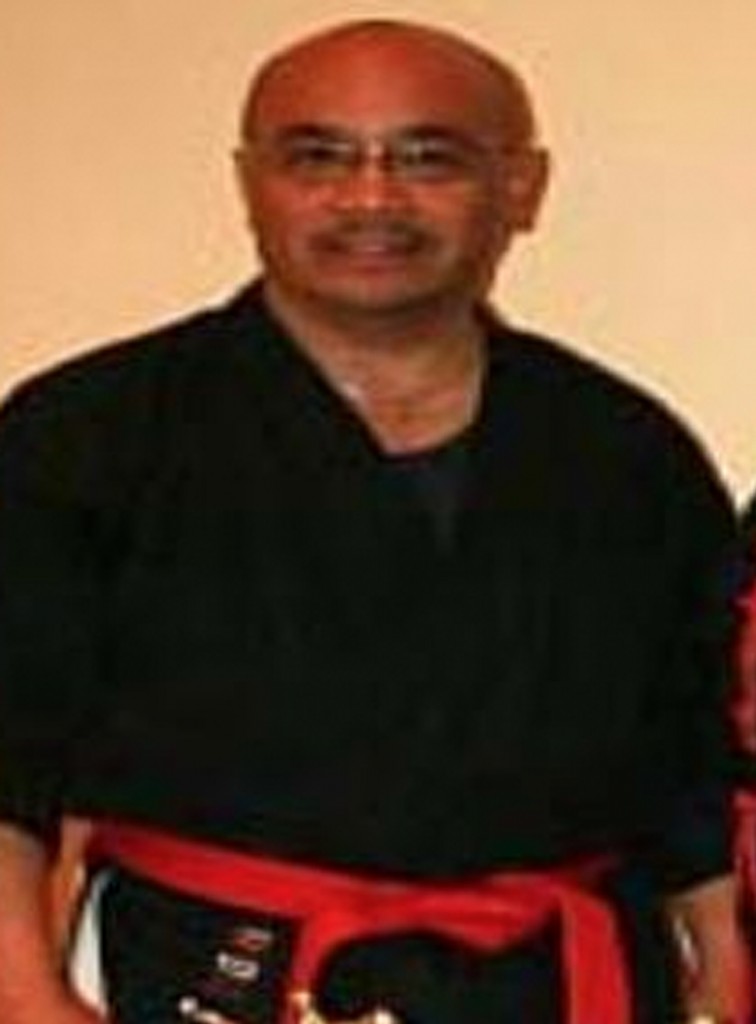
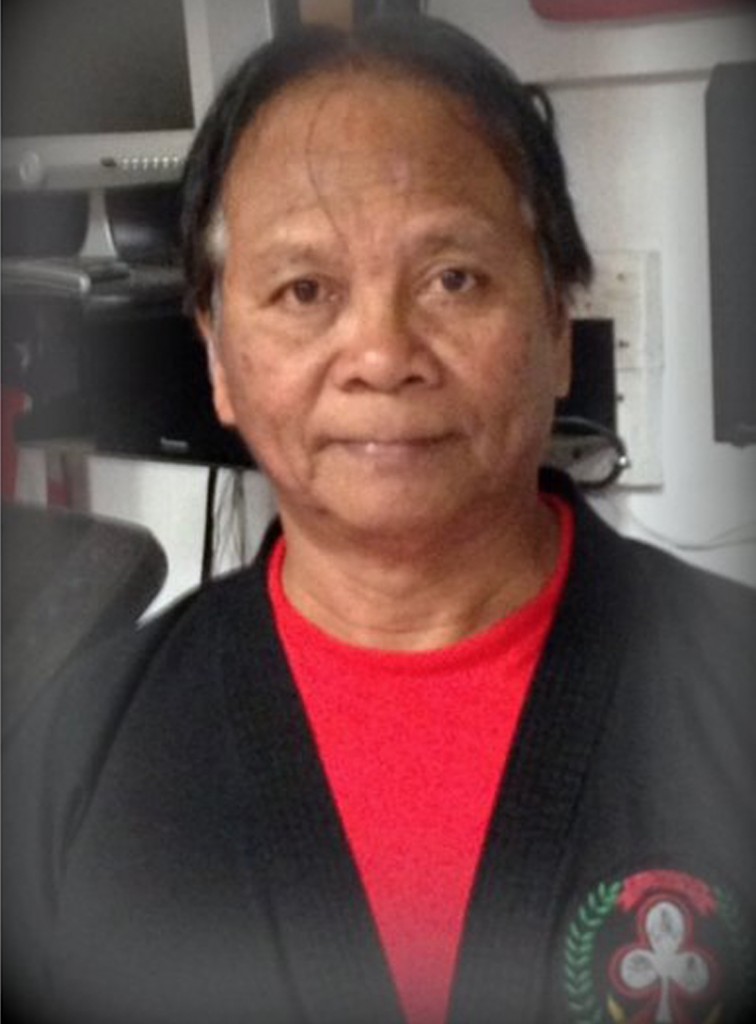
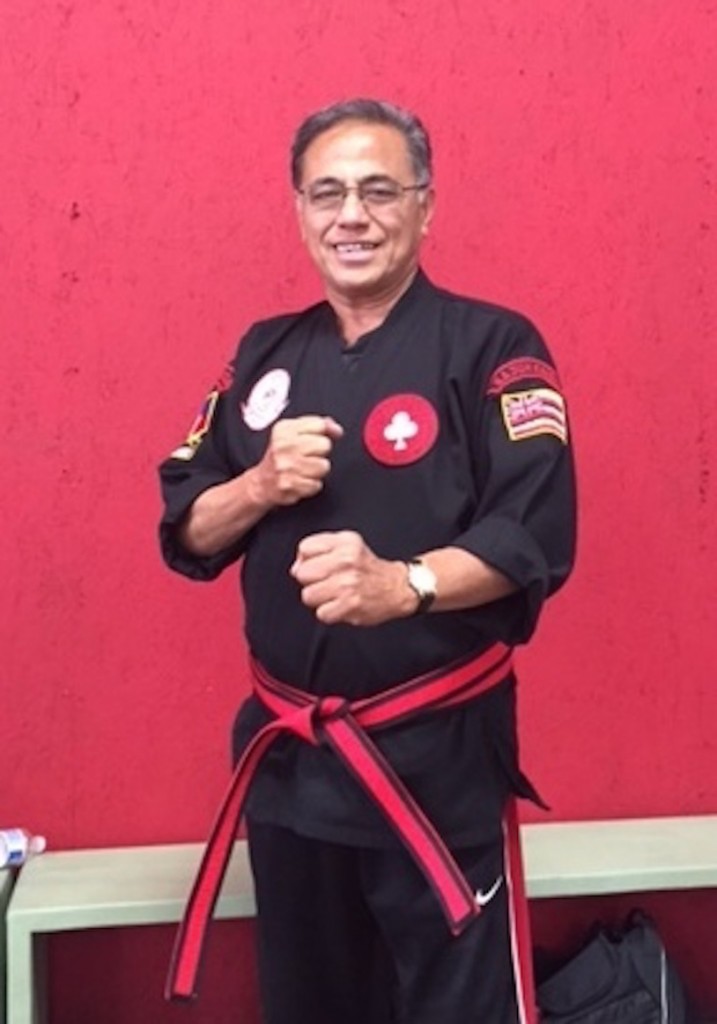
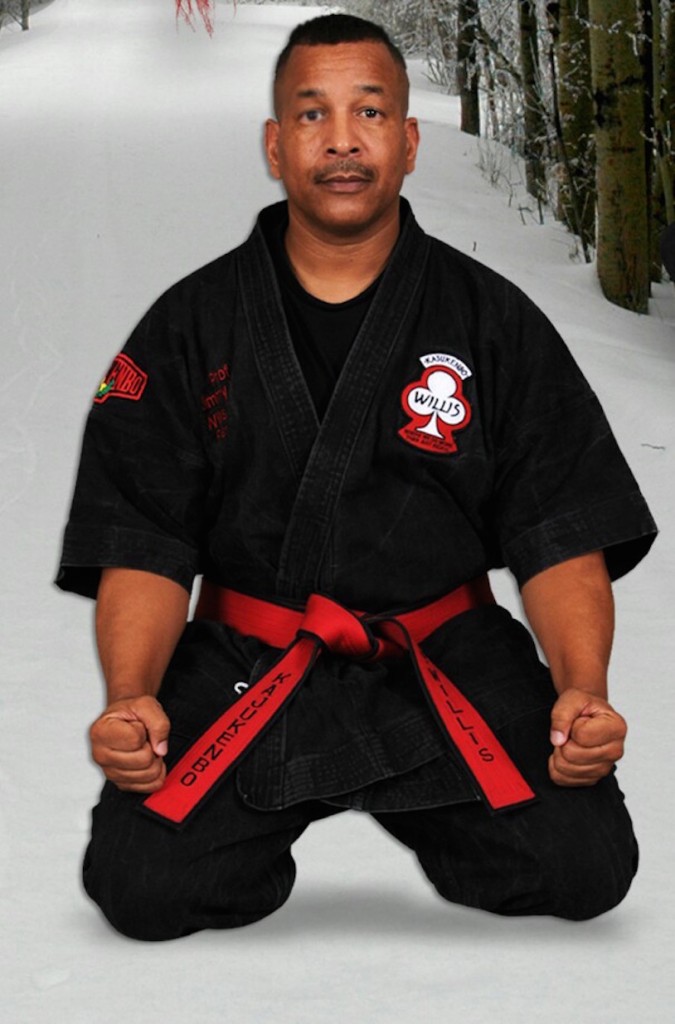
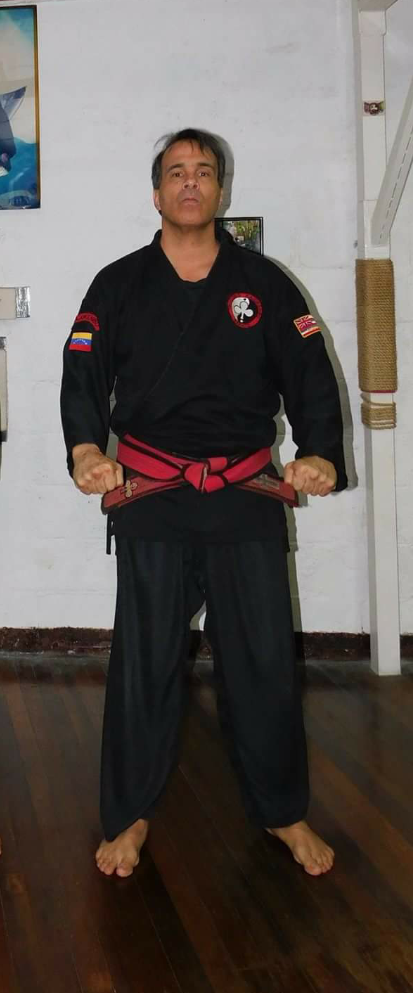
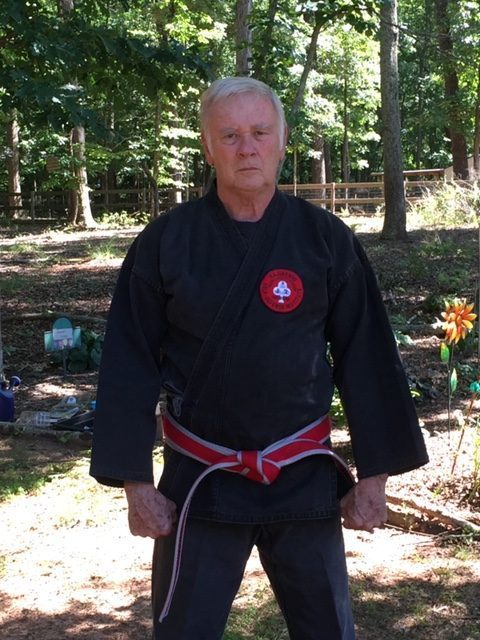

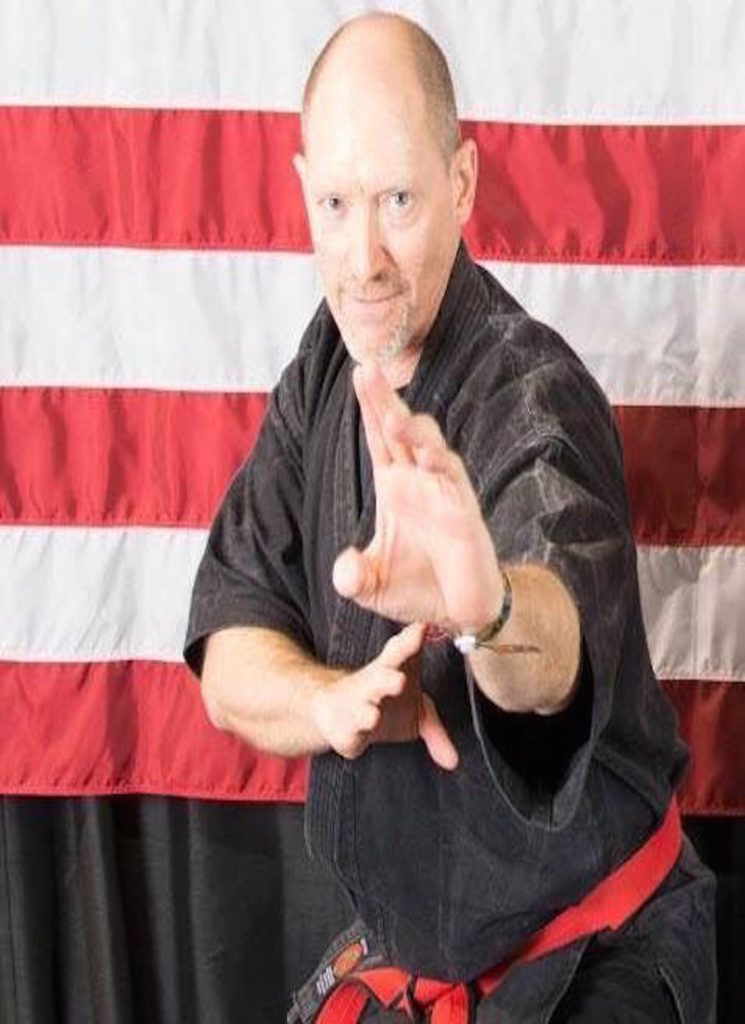
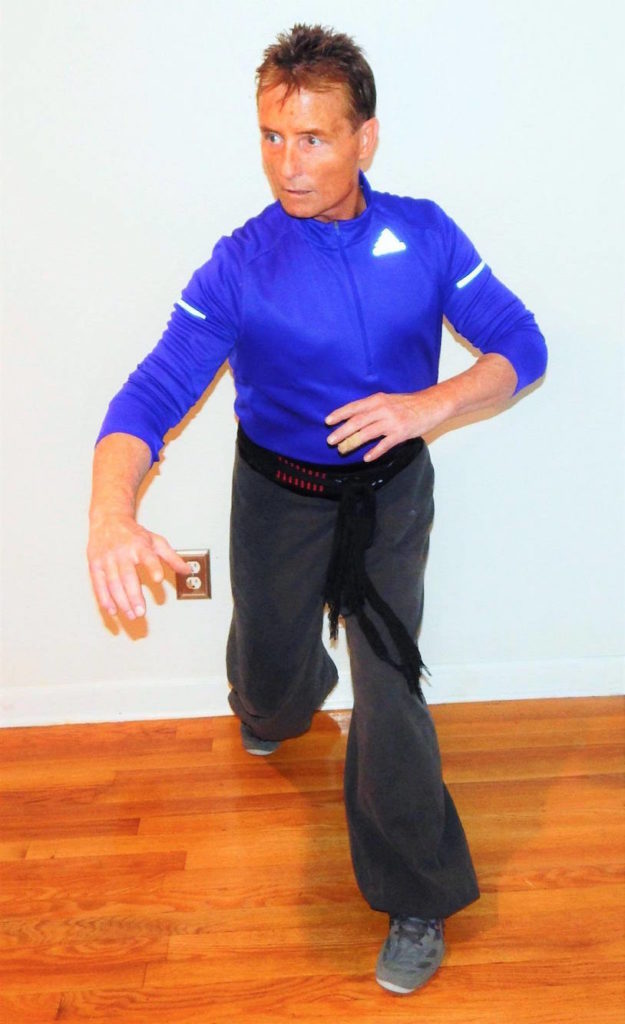

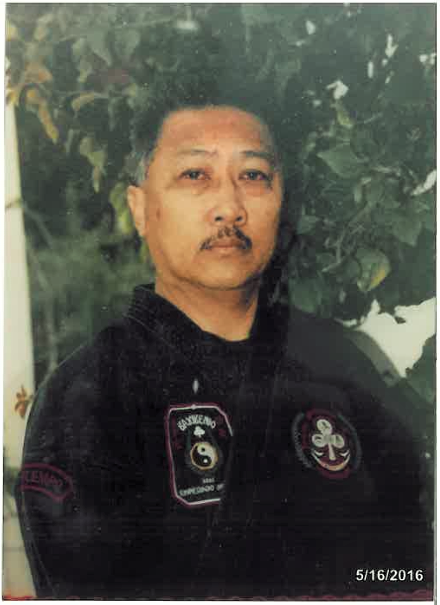
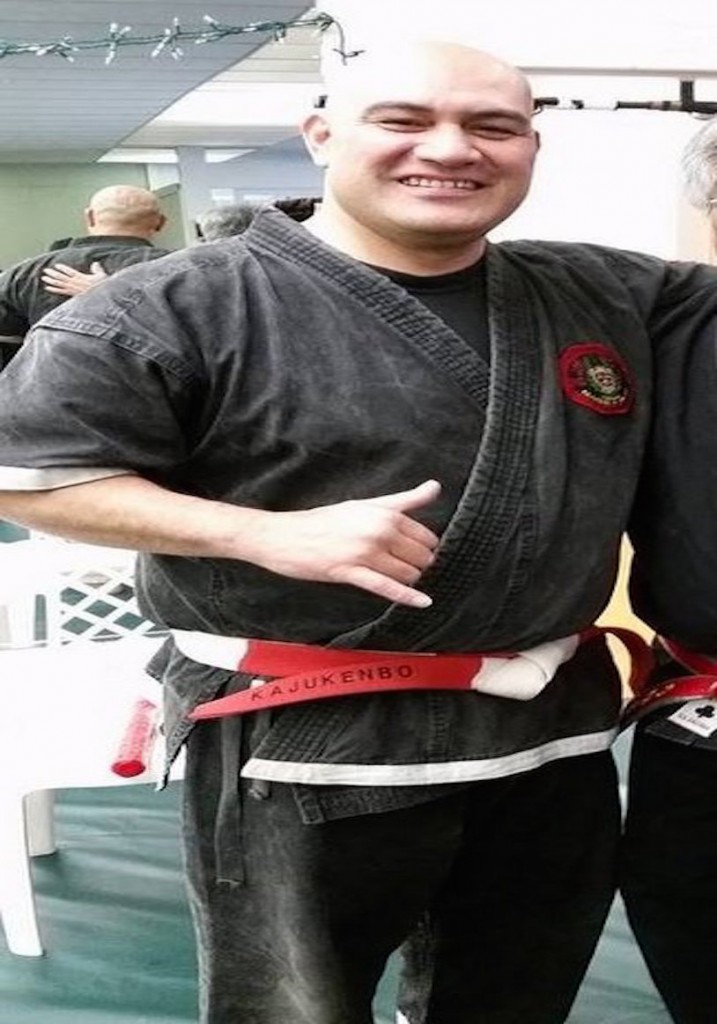
• 9th Degree Black Belt
• 50+ Years Kajukenbo
He began his Martial Arts career in 1968 after returning from duty in Viet Nam. He
received his Black Belt from Great Grandmaster Joseph Halbuna in 1973. He opened
his Karate School in Salinas in 1974 where he instructed some of the top students.
The Kajukenbo Demo Team was formed from this school and they began giving
demo’s locally and statewide getting great reviews. Then in 1980’s Sijo Emperado
declared them the Official Demonstration Team of the Kajukenbo System.
Senior Grandmaster Cariaga was directly under the guidance of Sijo Emperado. The Team
then went National, being invited to some of the most prestigious tournaments in the
United States to perform. Including the following: The U.S. Open, the Diamond
Nationals, the Battle of Atlanta, Lama Nationals, National Karate Finals, California
Karate Championships, Top Ten Nationals, MGM Grand Reno Nv.,San Francisco 49ers, Oakland Raiders. They were Featured in Karate Illustrated and Black Belt
Magazines.
SGM Cariaga was promoted to 8th degree in 1999 by Sijo Emperado. He had
the privilege of knowing and performing for the five heads of the branches of
Kajukenbo brought to the mainland. They include Grandmaster’s: Aleju Reyes, Tony
Ramos, Joseph Halbuna, Charles Gaylord, and Al Dacascos.
He has instructed hundreds of dedicated students the old hardstyle way, tough
physical contact. He is a member of the United States Martial Arts Hall Of Fame. He
founded Kajukenbotraining.com and is available to share his Knowledge along with
other Instructors on the website.
• 9th Degree Black Belt Kajukenbo
• 40 years Kajukenbo
• Tai Chi
• Wushu
Senior Grandmaster Forbach studied under the late Senior Grandmaster Aleju Reyes. He has been one of the best forms competitors nationally for Kajukenbo. He has given many seminars worldwide; he also has a line of videos by Panther Videos. He brings style and an open mind to the group. We welcome him and look forward to seeing him perform on the mat. Professor Forbach’s training in Tai Chi and Wushu will bring new moves into Kajukenbo. His personality and loyalty to Sijo is what stands out.
• 9th Degree Black Belt Kajukenbo
• Kali Schools in Spain
Representing Europe, Grandmaster Garcia resides in Spain. He has 30 years of dedicated service to Kajukenbo. He has trained many Black Belts, been involved in many seminars and has traveled worldwide to meet many of the different Kajukenbo instructors. He has also written a book on Kajukenbo. His personality and dedication makes him a perfect Ambassador for Kajukenbo. He has allot of knowledge and is willing to share it. The fact that he can perform on the mat with anyone is a joy to watch.
• 9th Degree Black Belt
• 30 years Martial Arts Experience
• Founder Official Kajukenbo Tree
• Pekiti Tiria Hall of Fame
• Subic Bay, Philippines
• Member Emperado Kajukenbo Association
• Won International Kali Grand Championships,Nashville Tennessee
Grandmaster Philip Gelinas resides in Montreal, Canada. He began his martial arts training in Chito Ryu 1967 at age 14. Mr Gelinas has had extensive training in Judo, Hop Gar Gung Fu, Japanese Kempo, Won Hop Kuen Do, Pekiti Tirsia Kali, Brazilian Jiu Jitsu,Maphilindo Silat, Jun Fan Gung Fu, Savate and Capoeira Camara. He received his Black Belt in Kajukenbo in 1975.
We owe him genuine gratitude for all the hours he has spent on research on the Official Kajukenbo Family Tree. We look forward to him sharing the vast knowledge he has accumulated in his Martial Arts training.
• 9th Degree Kajukenbo Black Belt
• Wahiawa Kajukenbo, Ramos Martial Arts
• Kajukenbo National Federation
• Kajukenbo Self Defense Institute of Northern California
• HeadQuarters of Vallejo- Affiliated Partner
The Legacy of Ahgung Tony Ramos lives on and we at kajukenbotraining.com are honored to have GM Anthony Ramos his son join our group. He trains as his father taught him. The Ramos Branch will be well represented by him and Grandmaster Bautista.. GM Ramos teaches at the Wahiawa Kajukenbo-California School in Suison City.
Professor Sarabano, originally from Haleiwa, Hawaii, was first introduced to Martial Arts in 1959. He joined Kajukenbo in Salinas, CA with the Cariaga School in 1974 and remained with them until receiving his Black Belt in 1978.
As an active member of the Cariaga Kajukenbo Demo-Team of Salinas. The only Officially named Demo-Team of Kajukenbo, by Sijo Emperado, Professor Sarabano had the honor of performing at many of the largest tournaments in the nation.
Upon moving back to Hawaii with his family, Mr. Sarabano opened his first school in 1990 and a short time later a second, where some of Professor Sarabano’s black belts continue to train.
1997 Grandmaster moved back to California and rejoined Senior Grandmaster Cariaga’s School once again and where he remains today.
Professor Jimmy Willis began studying Kajukenbo in 1976 under Kajukenbo Black Belt holder Gabe Vargas, who was under Great Grandmaster Charles H. Gaylord. Professor Jimmy Willis received his 7th degree from Sijo Adrian Emperado, himself (who passed away on the 4th of April 2009). On July 09, 2011, B.O.A. of K.S.D.I. (Board of Advisors of Kajukenbo Self Defense Institute), promoted Professor Jimmy Willis to his 8th degree and titled Professor.
Professor Jimmy Willis has been nationally rated in Men’s Black Belt Fighting, Black Belt Kata and Black Belt Weapons Kata on the tournament circuit, beginning 1982. Once rated in World rating in both Men’s Black Belt Kata and Weapons Kata, he is also undefeated in Full Contact Kick Boxing. Professor Jimmy Willis specializes in wrestling; in 1978 he was the Bay Area Champion (Alameda County, CA) in the 156 lbs weight class. He also competed in boxing, Muay -Thai Kick Boxing, Escrima and Kabaroan (Pilipino/Escrima stick fighting art).
Professor Jimmy Willis career in competition has been limited by his military service; he participated in both Desert Shield and Desert Storm 1990-1991 with the 41st C.S.H. (Combat Support Hospital). In 1992 he was stationed in Germany and in 1994 he visited the Philippines. He moved to Fresno, CA in late 1994 where he currently resides, teaching martial arts and promoting self-esteem and self-discipline. He is known for producing top competitors within the Martial Arts Circuit. Youth and adult. Male and female. World rated, National and Regional rated within the martial art tournament circuit level.
Hall Of Fame Awards:
July 12, 1997 – World Martial Arts Hall of Fame /Outstanding Contribution to the Martial Arts
July 15, 2000 – Filipino Martial Arts Hall of Fame /Outstanding Competitor
July 20, 2000 – Master’s Martial Arts Hall of Fame /Leadership
October 19, 2001 – North America Hall of Fame /Outstanding Instructor of the Year
January 17, 2004 – Action Martial Arts Magazine’s Hall of Fame /Outstanding Achievements in the Martial Arts
March 17, 2005 – March Madness Hall of Fame / Many Outstanding Contributions to Martial Arts and the Sport of Karate
January 14, 2012 – United States Council of Martial Arts / Master of the Year
May 4, 2013 – USA Martial Arts Hall of Fame / Kajukenbo Silver Life Award
June 22, 2013 – USA Black Belt Hall of Fame / Hard Work and Dedication
World ratings, National ratings and Regional ratings: Starting up again in 1998 after coming out from a semi-retirement, dating back from “1989”. Professor Jimmy Willis, has been rated #1.
1998-National Ratings: IMAC (International Martial Arts Championship). #1 in Men’s Black Belt Traditional Kata, #1 in Men’s Black Belt Open Kata, #1 in Men’s Black Belt Weapons Kata and #2 in Men’s Black Belt Sparring (Middle Weight).
1999-National Ratings: IMAC (International Martial Arts Championship). #1 in Men’s Black Belt Traditional Kata, #1 in Men’s Black Belt Open Kata, and #1 in Men’s Black Belt Weapons Kata.
2000-World Ratings: NASKA (North American Sports Karate Association). World rated in the top #10 in Traditional Men’s Black Belt Kata and in Men’s Black Belt Weapons Kata. National Ratings: IMAC (International Martial Arts Championship). #1 in Men’s Black Belt Traditional Kata, #1 in Men’s Black Belt Open Kata, and #1 in Men’s Black Belt Weapons Kata. Regional Ratings: GCC (Gold Cup Circuit). Rated #1 in Men’s Black Belt Traditional Kata and in Men’s Black Belt Weapons Kata.
2001-World Ratings: NASKA (North American Sports Karate Association). World rated in the top #10 in Traditional Men’s Black Belt Kata and Men’s Black Belt Weapons Kata. National Ratings: IMAC (International Martial Arts Championship). #1 in Men’s Black Belt Traditional Kata, #1 in Men’s Black Belt Open Kata, and #1 in Men’s Black Belt Weapons Kata. TPA (Tournament Promoter Association). #1 in Men’s Black Belt Traditional Kata, #1 in Men’s Black Belt Open Kata and #1 in Men’s Black Belt Weapons Kata. Regional Ratings: GCC (Gold Cup Circuit). Rated #1 in Men’s Black Belt Traditional Kata.
2002-National Ratings: IMAC (International Martial Arts Championship). #1 in Men’s Black Belt Traditional Kata, #1 in Men’s Black Belt Open Kata, and #1 in Men’s Black Belt Weapons Kata. TPA (Tournament Promoter Association). #1 in Men’s Black Belt Traditional Kata, #1 in Men’s Black Belt Open Kata and #1 in Men’s Black Belt Weapons Kata.
2003-National Ratings: IMAC (International Martial Arts Championship). #1 in Men’s Black Belt Traditional Kata, #1 in Men’s Black Belt Open Kata, and #1 in Men’s Black Belt Weapons Kata. TPA (Tournament Promoter Association). #1 in Men’s Black Belt Traditional Kata, #1 in Men’s Black Belt Open Kata and #1 in Men’s Black Belt Weapons Kata.
2004-World Ratings: NASKA (North American Sports Karate Association). World rated in the top #10 in Traditional Men’s Black Belt Kata and Men’s Black Belt Weapons Kata. National Ratings: IMAC (International Martial Arts Championship). #1 in Men’s Black Belt Traditional Kata, #1 in Men’s Black Belt Open Kata, and #1 in Men’s Black Belt Weapons Kata. TPA (Tournament Promoter Association). #1 in Men’s Black Belt Traditional Kata, #1 in Men’s Black Belt Open Kata and #1 in Men’s Black Belt Weapons Kata.
2005-World Ratings: NASKA (North American Sports Karate Association). World rated in the top #10 in Traditional Men’s Black Belt Kata and Men’s Black Belt Weapons Kata. National Ratings: IMAC (International Martial Arts Championship). #1 in Men’s Black Belt Traditional Kata, #1 in Men’s Black Belt Open Kata, and #1 in Men’s Black Belt Weapons Kata. TPA (Tournament Promoter Association). #1 in Men’s Black Belt Traditional Kata, #1 in Men’s Black Belt Open Kata and #1 in Men’s Black Belt Weapons Kata.
2006-World Ratings: NASKA (North American Sports Karate Association). World rated in the top #10 in Traditional Men’s Black Belt Kata and Men’s Black Belt Weapons Kata. National Ratings: IMAC (International Martial Arts Championship). #1 in Men’s Black Belt Traditional Kata, #1 in Men’s Black Belt Open Kata, and #1 in Men’s Black Belt Weapons Kata. TPA (Tournament Promoter Association). #1 in Men’s Black Belt Traditional Kata, #1 in Men’s Black Belt Open Kata, #1 in Men’s Black Belt Weapons Kata and #2 in Men’s Black Belt Sparring (Heavy Weight).
2007-National Ratings: IMAC (International Martial Arts Championship). #1 in Men’s Black Belt Traditional Kata, #1 in Men’s Black Belt Open Kata, and #1 in Men’s Black Belt Weapons Kata. TPA (Tournament Promoter Association). #1 in Men’s Black Belt Traditional Kata, #1 in Men’s Black Belt Open Kata, #1 in Men’s Black Belt Weapons Kata and #2 in Men’s Black Belt Sparring (Heavy Weight).
2008-National Ratings: IMAC (International Martial Arts Championship). #1 in Men’s Black Belt Kenpo Kata. TPA (Tournament Promoter Association). #2 in Men’s Black Belt Traditional Kata, #2 in Men’s Black Belt Open Kata and #2 in Men’s Black Belt Weapons Kata.
2009-National Ratings: IMAC (International Martial Arts Championship). #1 in Men’s Black Belt Kenpo Kata. #1 in Men’s Black Belt Weapons, #1 in Men’s Black Belt Traditional Kata and #1 in Men’s Open Kata.
2010- National Ratings: IMAC (International Martial Arts Championship). #1 in Men’s Black Belt Kenpo Kata, #1 in Men’s Black Belt Traditional Kata, #1 in Men’s Black Belt Open Kata and number #1 in Men’s Black Belt Weapons Kata.
2011- National Ratings: IMAC (International Martial Arts Championship). #1 in Men’s Black Belt Kenpo Kata, #1 in Men’s Black Belt Traditional Kata, #1 in Men’s Black Belt Open Kata and number #1 in Men’s Black Belt Weapons Kata.
2012- National Ratings: IMAC (International Martial Arts Championship). #1 in Men’s Black Belt Kenpo Kata, #1 in Men’s Black Belt Traditional Kata, #1 in Men’s Black Belt Open Kata and number #1 in Men’s Black Belt Weapons Kata.
2013-National Ratings: IMAC (International Martial Arts Championship). #1 in Men’s Black Belt Kenpo Kata, #1 in Men’s Black Belt Traditional Kata, #1 in Men’s Black Belt Open Kata and number #1 in Men’s Black Belt Weapons Kata. PAC (Promoters Association of California). #1 in Men’s Black Belt Weapons Kata.
Noted: Ratings from 1982 – 1986 can be found in Karate Illustrated Magazine Archives, under regional #6.
2001 was a year where Professor Jimmy Willis showed off some skills by providing stunt work along with choreographing fight scenes and starred as a villain, in a movie called “Battle Beast”. Other movies between 2000 and 2005 where Knights of Justice, Fist of Fong and the Action Agency (were Professor Jimmy Willis stared, choreographed and applied stunt work).
Professor Jimmy Willis has represented both the U.S. Army and Karate by participating on Karate Programs in San Antonio, TX, and Fresno, CA. (Karate World and Kicks for Punches on both local and cable TV in San Antonio, TX and KMPH Morning News in Fresno, CA). Professor Jimmy Willis has also been featured in three categories. Local newspapers, tournament magazines and tournament flyers both nationally and internationally. He represented Kajukenbo and the U.S. Army by placing 2nd overall in Tae Kwon Do Olympic trials in the Men’s Middle Weight Division in 1988.
The following instructors are credited for Professor Jimmy Willis, Martial Arts Education: Gabe Vargas (Kajukenbo), Grandmaster Charles H. Gaylord (Kajukenbo), Grandmaster Al Dacascos (Kajukenbo, Won Hop Kwon Do), Grandmaster Larry Lockhart (Tae Kwon Do) and Sijo Ramiro Estalilla (Kabaroan, Escrima stick fighting).
Professor Jimmy Willis notes; He is blessed with countless friends he has met in and out of the Martial Arts circuit, for they have enriched him not only in friendship but in knowledge as well. Martial art is great……….
Kajukenbo Forever!!!
Professor Augusto Troconis was born in Caracas, Venezuela on September 27th, 1967. In 1979, the Troconis family moved to the San Francisco Bay Area in California were he and his brothers Sergio and Ricardo began their Kajukenbo training under Grandmaster Frank Bianchi in the City of Burlingame. Little did Professor Augusto know then that his training would become both a full time career and way of life.
In 1983, Augusto and Sergio tested for their 1st Degree Black Belts and the title of Sibak. That same year, the Troconis family moved back to Venezuela, and with the blessing of GM Bianchi and family, Augusto and Sergio (now Sigung, 6th Degree Red/White belt) opened the TROCONIS KAJUKENBO KARATE Dojo of Venezuela, which is still going strong today.
Augusto teaches full time at his Dojo. He and his students perform and compete at various open martial arts tournaments and events demonstrating the strong Kajukenbo way, and staying true to the roots of the Kajukenbo system. In December 2004, Augusto was named Kajukenbo “Instructor of the Year” an award given to him by the late Senior Grand Master Joseph Halbuna under the Kajukenbo Pacific Coast Association. Augusto also studied at the University in Caracas and earned a degree in Physical Education, Sports and Recreation for physically and neurologically challenged individuals. A class designed specifically for these special students is now offered at the Venezuela dojo.
Augusto made several trips back to California to continue his training and rank advancement. In February, 2011, Augusto performed the strong Kajukenbo way and was promoted to 8th Degree Red/Black Trim Belt and given the title of Professor. Professor Augusto is proud and honored to be in the book “Kajukenbo the Emperado Legacy” written by Professor John Evan Bishop.
In July 2018, the Troconis Kajukenbo Karate dojo in Venezuela will be celebrating its 35th Anniversary, continuing on in training the Strong Kajukenbo way. To date, Professor Augusto has promoted 24 of his students to the rank of Black Belt.
Professor Augusto with great humility, gives thanks to God, his Mother Omaira and Father Sergio, his Brothers Sergio and Ricardo and his Sister Carmen, his wife Annelisse and her family, their daughter Annabelle, his Instructor GM Bianchi for all his teaching and the Bianchi’s family, to his Assistant Instructor Sifu Al Tom. Thanks also to SGM Halbuna and Family, to SGM Frank Conway, to all the Instructors who were present and judges at his testings, to his dear friends Sifu Betsy, Sifu Ron, Sifu Nancy, Sifu Roger, Sifu Ilona, Mr. Walter and Mrs. Beverly Colquhoun and family, the Sanz family, his students and friends for all their support and to the KAJUKENBO system for its teaching, the happiness and all the excellence it has brought to his life.
BIO written by Sifu Ilona Halbuna
Grandmaster Gary Deaver began his martial arts training in Kajukenbo Karate in 1985 in Pacifica, CA and trained for 3 yrs under the instruction of Great Grandmaster Joseph Halbuna. He received his Black Belt in Kajukenbo under Professor Bob Maschmeier in 1990. Grandmaster Deaver continued training in Kajukenbo while pursuing other arts as well. In 1991 he began training in Kodenkan Danzan Ryu Jujitsu under the instruction of Professor Willy Cahill. He received his Black Belt (Shodan) in 1994.
Shortly after receiving his Black Belt, Grandaster Deaver founded Coast Karate Studio East Bay in Pinole, CA, which he taught along with the help of his son, Professor Jared Deaver. In May, 2019 he moved to Waco, Texas and established CKS Martial Arts; a school in the nearby town of Gatesville, where he teaches both Kajukenbo and Jujitsu.
Grandmaster Deaver currently holds the rank of 9th Degree Black Belt in Kajukenbo Karate, and 4th Degree Black Belt (Yodan) in Kodenkan Danzan Ryu Jujitsu and has cross trained in Sil Lum Fut Ga and Aikido.
In addition to his activities at the school Grandmaster Deaver teaches Women’s Self Defense courses for various organizations which includes churches, schools, hospitals, professional offices, and medical organizations
Active Black Belt from 1981 to Present
Burt Vickers was born in Abilene Texas. He Started His Martial arts Training at the age of 15, in Tang Soo Do (Korean Karate, similar to Tae Kwon Do) in Abilene Texas, with Master Lane Barry and Dave Jackson.
He moved to the Dallas Fort Worth area at the age of 18 and continued his martial arts education in Chun Do Kwon- Tae Kwon Do under Two of Jack Simpsons Black Belts – Christy Moss and Bobby Stovall from Grand Prairie Texas all under the Great ” Blood n Guts “T.K.D. Master Alan Steen’.
After reaching the rank of Black belt Mr. Vickers began training in full contact kickboxing with Bobby Stovall. Mr. Vickers enjoyed the amateur contact competition and fought over a 4 year period with a record of 7 wins and 3 losses.Burt Vickers retired from amateur Kickboxing at the age of 22. Mr. Vickers began the study of Aikido and Judo between 1987 – 1989 reaching only the mid-level color ranks within Aikido and Kodokan Judo. (Dallas Aikido and Vince Tamura Judo Center Bachman area)
In September of 1989, he met the instructor that was to shape his martial arts career from then to this day.The man was a quiet, unassuming instructor from California via Hawaii, and invited him to train under his system of Kajukembo.This man was Professor Richard L Peralta, who was a Black belt student under Grand Master Aleju Reyes, who in turn was one of the first group of Black belts out of the legendary Palama Settlement of Hawaii under SIJO A. D. Emperado, the founder of the Kajukenbo system.
To determine his level of commitment, Professor Peralta attempted to discourage Mr. Vickers with the brutal workouts (the “old Hawaiian way”) in the Hawaiian lingo “to Bust m up good”. Recognizing the skill and ability of his instructor Mr. Vickers persevered and became a devoted student to the art of Kajukembo / Kajukenbo under Master Richard Peralta.Mr. Vickers trained hard, continues to become a Black belt, and was awarded the rank of Black belt in the fall of 1993.
Mr. Peralta and Mr. Vickers ran several seminars in Puerto Rico, California and Las Vegas during the years 1993 to 1998.During this time Mr. Vickers Started a school in Irving Texas at West Park Recreation Center.Mr. Vickers moved to Lubbock, Texas in 1998 and started a part time school teaching Kajukembo Self Defense. After 8 years nd rd th th
as a first Degree Black Belt. Professor Peralta promoted him to his 2 , 3 , 4 , and 5
Degree Black Belts in, 2001, 2002, 2003, and 2004.He ran the school in Lubbock until the spring of 2005 at which time he transferred jobs to the Dallas Fort Worth Area.
On moving to Dallas, Mr. Vickers was invited to stay with Mr. Peralta with the goal of starting a full time school. Unfortunately these plans came to an abrupt halt with the untimely death of Mr. Peralta in October of 2005. Mr. Vickers and the remaining members of the Kajukembo Self Defense systems, band together and formally created the Kajukembo Self Defense Systems Association.
In the Fall of 2006 Mr. Dan Frazier “KSDS foremost Senior black belt 9th Degree black belt
“along with the KSDS board –promoted Mr. Vickers to the title of Sigung and the Rank of 6th Degree Black belt, and In the Summer of 2011 G.M. Dan Frazier promoted Mr. Vickers to the
Rank of 7th Degree Black belt and inducted into the United States Martial arts Hall of Fame,
and on August 15th 2015 Mr. Vickers was promoted to the title of Professor 8th Degree Black Belt at the Richard Peralta Memorial Seminar and Luau event by G.M Dan Frazier , G.M Ed Shepard, SGM Manuel Arcos, Sigung Israel Gonzales.
Mr. Vickers moved in the fall of 2007 to Houston Texas, where he is teaching today from his home and studio school location. He continues to keep the memory of Richard Peralta’s KSDS system alive.
I began training in the martial arts in 1978 under Sifu Jospeth Clarke, his method of Kajukenbo was called Emerging Center. His teacher was Ahgung Tony Ramos. Sifu Clarke was his 4th black Belt. Sifu Clarkes kjkb had taken a different look by 78 for he had incorporated 6yrs of pa qua 3 yrs of sil lum and 3 yrs of wing chun into his kjkb.
from 78-83 I earned my 1st degree , sifu Clarke moved to Florida in 82 his top student sifu Rick Winkel took me from brown to black sifu Clarke flew up in 83 to promote me to my 1st degree.
In 83 sifu Winkel walked away from martial arts and I took over the school. At the time I was working a full time truck driving job and teaching from 5 pm to 9pm every night.
I knew that i wanted to teach others martial art for the rest of my life because it gave me great joy helping others learn . but i had to think this out and come up with a plan on how I could do this the right way.
I felt I had to go at this full time to have all day working myself and teaching in order to get skilled at this. I also needed to learn other forms of M/Arts and last I needed to learn how to market myself as well as the school, you see I knew nothing about it.
So I had no choice but to quit work (scary) and go for it. My plan of attack was to teach at a local health club and thats where I would learn everything I needed to know about teaching marketing and as for students they were already there (the health club members. I made an agreement with the club if I could teach everyday every night my students , then I would also teach any of their members for free. You see my plan was tio be there a year and a half. Once I left I figured those members that were learning kungfu would then follow me to my new place .
They accepted this and actually loved the fact they could tell their members lessons were free. now my next move was I had a few hours during the day where I had free time, so I began studying arnis 2-to -3x’s a week and at the same time I learned sifu Al Dacascos had returned to the United States so my goal was to get him somehow to teach me. It took half a year but I did it, I got him to start teaching me his art. Since he was a full state away I had to accomplish this by making trips to Oregon on weekends and also got him to come to me 4 xs a year by doing seminars . I did all this and ran a full time school in the club.
By the time a year and half was up I had a total of 60 students who did follow me to my new school and I had learned many valuable lessons of marketing that I took with me. Even though I now had my own school again my schedule did not change i worked my training and teaching the art all day and made it to arnis classes thru out the week and traveled to see sifu Al on weekends if he was available.
In short I kept this schedule for 4 yrs or so then I had earned a ranking in arnis and I now was at the schhol full time…I saw sifu Al as many times as I could throughout the year. I was learning from him his method of what his street defense was and I was learning thje wunhopkuendo street drills and concepts, I was not learning the art persay (forms ) etc just street I kept my ch’uan-fa foundation. I was to create and do my own thing as I seen fit with the kjkb that I had . I was free and I liked it.
by 1988 I began learning aikido I was not trying to be ranked or become a member I just wanted to feel it to experience it and for a year and a half I got to do just that at the Phinney Center in Seattle Wa. In order to be ableto adapt t you first haveto feel whats it like to have it applied on you and thats exactly what I did , I got tossed here there and over there lol. but I got to feel it and I got to become it and I then began to incorporate it into the things I was doing .
The rest to date is and always has been teaching full time my school had become very successful by 1993. I took that year to bring everything I had learned and experienced from Ch’uanfa from Whkd, from Arnis and from aikido and I blended them into one form one concept with self expression. I had began to update the forms to fit the way I was now seeing self defense I had also been developing complete new forms and weapon forms out of my head.
I learned that by working all day on something you gain a greaty on iut and when teaching students I gained more than I ever gave out
By 1994 I was asked to fly to California with 4 of my blk belt students and test them in front of sijo. How ever when I arrived I discovered there was much more behind me being there. sijo had learned of my revising much of what I was taught he learned that I really didn’t teach the numbered sets but instead taught open concept , unfixed in method. there were 25 or more high ranking kjklb peers there and that was when I learned this was the day sijo was taking a look at whats up , it was a yea or nea day as for me using Kajukenbo as my base.
Sijo had me show him everything from yellow to black and in the end he and many many peers gave their approval Faircloths Method was sanctioned. by 1995 my school was well known in the 3 tri state area my students worked hard and didnt like second places they wanted first. By 1995 Black belt magazine voted my school as the number 10 school they felt to be top schools in the country that year, I to this day cant believe they even heard of o my school lol. But its true it did happen i was fortunate enough to be featured in 76 other magazine articles and again I say fortunate , Im thankful and grateful; for every interview ever that I had.
From my 1st degree to present I never was one who was interested in degrees in fact from my first black belt until my 4th degree 11 yrs had passed and I wore just a black sash. It was 93 when sifu Al stepped in and said Im putting you where you belong and I began for the first time wearing stripes. 20 full time years went by and I wore that 4th dgree until I was talked to by GM Vargas and Sifu Al Dacascos of the importance of being promoted to 8th level. I had by then 60 of my own black belts who needed to be promoted themselves but since I was not it held them back etc. In 2012 both GM Vargasand Dacascos had gotten together with 5 other grandmasters to view my material my students and caused my 8th to be done.
Today I semi retired from full time and teach only one on ones , I actually get to live life today …what a beautiful thing it is and still get to teach daily but only a few hours. My thing is you have to give to live and last “Be kind to people”
The martial art to me,
Im not interested in the word fighting or fight I believe in self Protection only. I have difused many many would be situations I have also been attacked for real in a violent encounter andmore than once. With witnesses , I truly did not want to fight and when it went all that came out was to defend , there was no thought process and thats what I teach, the other half of me holds protection coarses for home security etc car jacking counter measure s etc…
Respectfully, Terry Faircloth
Sigung Gino Padua is a 6th degree red/white belt in the original Kajukempo system, as certified by the USA Kajukempo Association of Southern California.
His passion for martial arts began over 50 years ago, now it is his love of teaching to learn that he continues today. Sigung Padua started his career in martial arts by learning Judo at the local recreation center in San Diego when he was 12, in his 20s he began training in Kenpo, and also the more modern form of Kajukembo.
Later he trained in Tae Kwon Do and reached the level of 2nd degree, at the same time he was also introduced to Hapkido and Aikido. It wasn’t until he was 35, under the tutelage of Grandmaster Lucky Luciano that he was introduced to the original system of Kajukempo. The training included the original traditions and adhered to strong emphasis on aggressive self-protection as it was originally developed at the Palama Settlement in Hawaii in the 1940s.
While respectful and knowledgeable about several different martial arts training systems it is the original Kajukempo system that he teaches today, he feels it gives his students and those that attend his seminars, the most flexible and efficient method of learning to protect oneself. He teaches everyone that respect for tradition and an understanding of the ‘reason’ for each move is essential and he drills this philosophy into each of his lessons, he also places heavy emphasis on retaining the original traditions, prayers and purpose as established by the founders in Hawaii in the 1940s.
Sigung Padua shares his knowledge with his community by conducting seminars for members of the martial arts community, law enforcement and the general public in both Southern California and Nevada, and even establishing after school martial arts programs. It is because of this work and that he was recognized in the USA Freestyle Martial Arts Hall of Fame. And he is very adamant about wanting the best out of every student. He feels that no matter what level of experience his student or seminar attendee has, he always emphasizes the need to perfect the technique and to train hard, not to view it as merely practice, because the way you practice is how you will react in the street, and it may one day save your life.